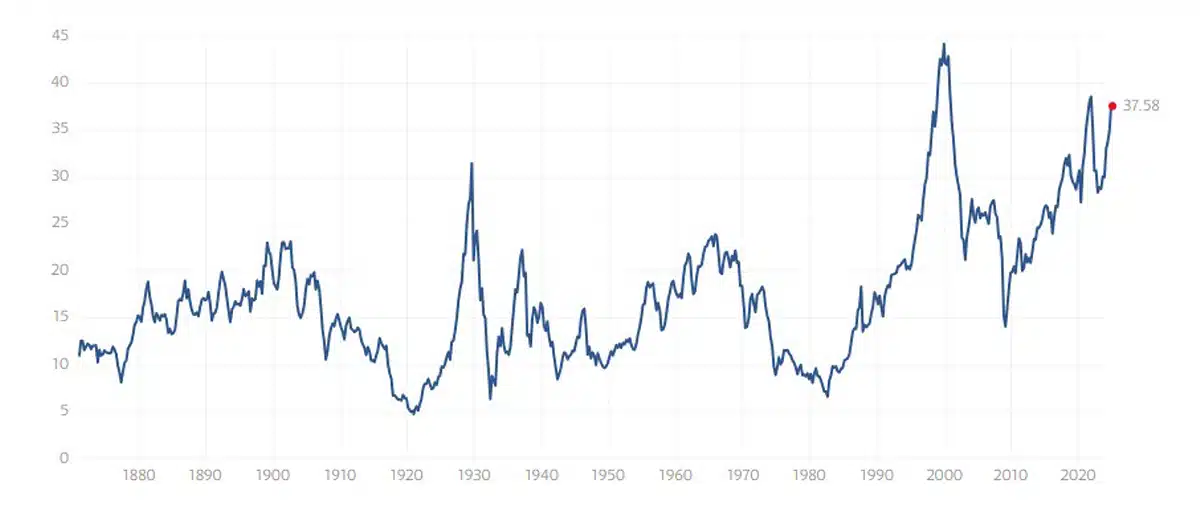
Financial Planning: Preparing for the Rising Costs of Long-Term Care
As the U.S. population continues to age, the demand for long-term healthcare is expected to rise steadily.

The S&P 500 has now had two back-to-back years of 25%+ returns. This is something that hasn’t happened since 1998. Not surprisingly, concerns about a market correction, or even a bear market are on the rise. Just to be clear, I am not in the business of trying to time the market. History has shown that that is a losing game. Yes, it is possible, or even probable, that someone out there has been successful in timing the market, but that is tantamount to saying the playing the lottery is a winning strategy because someone won tens of millions of dollars when the odds of being a winner are extremely long, about 1 in 302,600,000 for Mega Millions.
Shiller PE using 10-year trailing Earnings

Source: mutpl.com/shiller-pe
It seems fair to say that the US Equity Market is overvalued vs. history, but does that mean that it is really overvalued? One of our investment providers, Aptus Capital Advisors makes an argument that US Stock market may not be overvalued at all.
The argument goes that the composition of the US Equity market has changed substantially over time. First, Operating Margins have risen from about 6% to 13% over the past 35 years. The reason behind this sharp rise in profitability is that companies are more asset-light and focused on innovation. For the asset light piece, think of a steel mill or copper mine. Expanding production requires huge amounts of capital investment, and years of construction time. For a software company to create a new product requires far less capital expenditure, and the software is often distributed over the internet for very little cost. The software company in our example has high operating leverage in that it has low variable costs (making and distributing software) and stable fixed costs for software development and marketing. Thus, its cost of sales hardly budges as sales rise, and most of the revenues go directly to the bottom line.
In 1980, manufacturing represented 60% of the market cap of the S&P 500 while the asset-light sectors accounted for only 15%. Today, manufacturing has shrunk to 18% while the asset-light sectors account for 50% of the market cap of the S&P 500.
Back in 1990, the valuation of the S&P 500 in terms of Price to Equity was 13x; the operating margin was 5.7%. Today, the market trades closer to 22x, but with an operating margin of 12.8%. Thus, while the operating margin of the S&P 500 has grown by 120%, the market valuation has only grown by 69%.
So, it seems that market valuation is in the eye of the beholder, and there are reasons to believe that changes in the composition of the stock market may merit a higher earnings multiple. Remember, however, that operating leverage works in reverse when growth slows hitting companies with higher operating leverage harder than other areas of the market. And as Sir John Templeton remarked: “The four most dangerous words in investing are this time is different.’”

As the U.S. population continues to age, the demand for long-term healthcare is expected to rise steadily.

Alternative investments are evolving fast. Discover how IAG’s partnership with KraneShares enhances portfolios with strategic, evidence-based diversification.

As we gather with loved ones this Thanksgiving, it’s a perfect moment to reflect on gratitude, generosity, and the IMPACT we can make.

In October, the Federal Reserve cut its benchmark rate (the fed funds rate) by a quarter-percentage point to 4.00–4.25%.